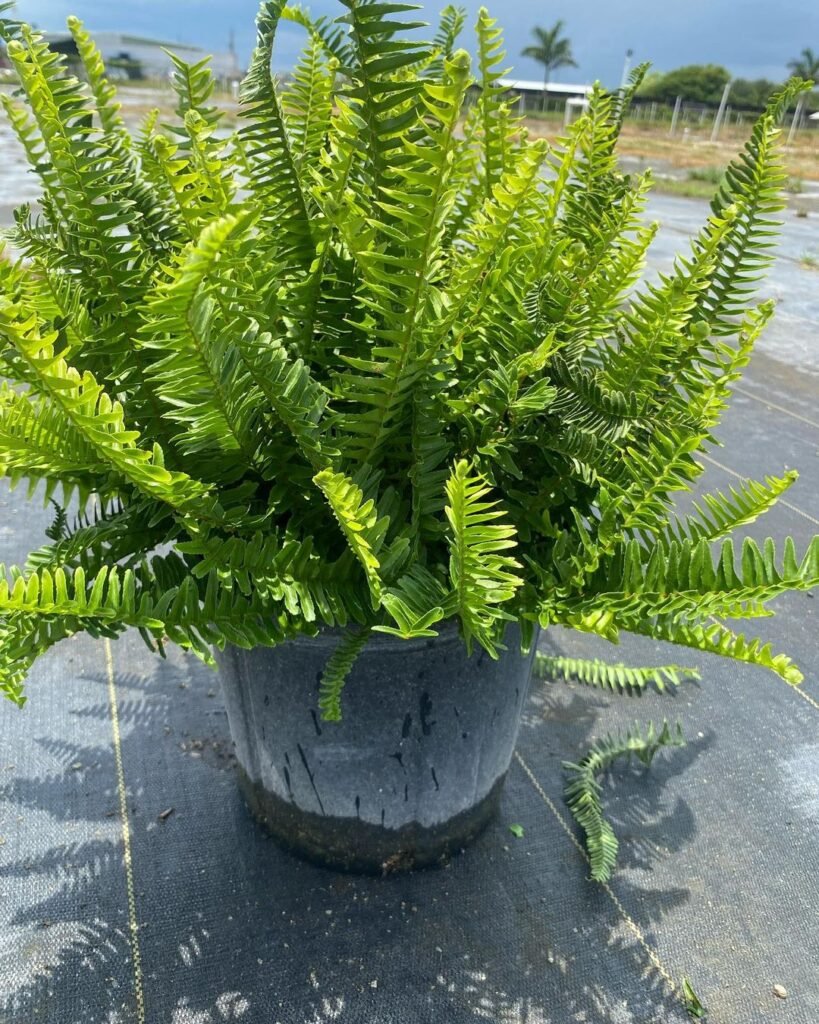Learn all about the Kimberly Fern, a popular indoor plant that thrives in indoor environments. Discover tips for keeping your Kimberly Fern healthy and lush, and why it’s best suited for indoor living.
The Kimberly Fern, also known as Nephrolepis obliterata ‘Kimberly Queen’, is a popular choice for indoor plant enthusiasts. With its lush, feathery fronds and adaptability to indoor conditions, it’s no wonder this fern has become a favorite in homes and offices alike. In this guide, we’ll explore everything you need to know about caring for your Kimberly Fern and keeping it thriving indoors.
Here’s a concise chart for the Kimberly Fern:
| Category | Details |
|---|---|
| Botanical Name | Nephrolepis obliterata |
| Common Name | Kimberly Fern |
| Plant Type | Fern |
| Zone | 10-11 |
| Sun Exposure | Low to moderate light |
| Soil Type | Well-draining, rich in organic matter |
| Watering | Keep consistently moist; not soggy |
| Growth Habit | Compact, bushy |
| Height/Spread | 1-2 feet tall, 1-3 feet wide |
| Special Features | Tolerant of low light, air-purifying |
What is a Kimberly Fern?

The Kimberly Fern is a cultivar of the sword fern family, native to tropical regions of Asia and Australia. It’s known for:
- Upright, feathery fronds
- Bright green color
- Compact growth habit
- Air-purifying qualities
Why Kimberly Ferns Prefer Indoor Life
Kimberly Ferns are well-suited to indoor environments for several reasons:
- Consistent temperature: They prefer stable temperatures between 60-75°F (15-24°C)
- Controlled humidity: Indoor environments can provide the moderate humidity they need
- Protection from direct sunlight: They thrive in bright, indirect light common in indoor spaces
- Shelter from wind: Indoor settings protect their delicate fronds from damage
Learn more about ferns as houseplants
Caring for Your Kimberly Fern
Light Requirements:
- Bright, indirect light is ideal
- Can tolerate lower light conditions, but growth may slow
- Avoid direct sunlight, which can scorch the fronds
Tip: Place near a north or east-facing window for optimal light.
Water Needs:
- Keep soil consistently moist but not waterlogged
- Water when the top inch of soil feels dry
- Use room temperature water to avoid shocking the plant
Humidity:
- Prefers moderate to high humidity
- Mist fronds regularly or use a pebble tray to increase humidity
- Consider using a humidifier in dry environments
Soil and Fertilizer:
- Use a well-draining, peat-based potting mix
- Fertilize monthly during the growing season with a balanced, water-soluble fertilizer
- Reduce fertilization in winter
Temperature:
- Thrives in temperatures between 60-75°F (15-24°C)
- Avoid cold drafts and sudden temperature changes
Pruning and Maintenance:
- Remove any yellow or brown fronds at the base
- Trim to maintain desired shape and size
- Clean fronds occasionally to remove dust
Common Problems and Solutions
1. Yellow or Brown Fronds:
- Cause: Often due to overwatering or low humidity
- Solution: Adjust watering schedule and increase humidity
2. Pale or Faded Fronds:
- Cause: Too much direct sunlight
- Solution: Move to a location with bright, indirect light
3. Slow Growth or Sparse Fronds:
- Cause: Insufficient light or nutrients
- Solution: Ensure adequate light and regular fertilization
4. Frond Tips Turning Brown:
- Cause: Low humidity or tap water with high mineral content
- Solution: Increase humidity and use filtered or distilled water
5. Pest Infestations:
- Common pests: Spider mites, mealybugs, scale insects
- Solution: Isolate affected plants, treat with insecticidal soap or neem oil
Why Kimberly Ferns Shouldn’t Go Outdoors
While some houseplants benefit from occasional outdoor time, Kimberly Ferns are best kept indoors for several reasons:
- Sensitive to temperature fluctuations
- Can be easily damaged by wind or rain
- Susceptible to pests and diseases common outdoors
- May sunburn in direct outdoor light
If you do want to give your Kimberly Fern some outdoor time, limit it to brief periods in a sheltered, shady spot during mild weather.
Propagating Kimberly Ferns
Kimberly Ferns can be propagated through division:
- Remove the plant from its pot
- Gently separate the root ball into smaller sections
- Ensure each section has several fronds and roots
- Replant in separate pots with fresh potting mix
Propagation is best done during the spring or early summer when the plant is actively growing.
Learn more about fern propagation
Decorating with Kimberly Ferns
Kimberly Ferns make versatile decorative plants:
- Use as a standalone floor plant in a decorative pot
- Place on a plant stand to add height to a room corner
- Incorporate into a group of mixed houseplants for a lush display
- Hang in a basket for a dramatic cascading effect
Their air-purifying qualities make them excellent choices for bedrooms and offices.
The Kimberly Fern is a beautiful and rewarding indoor plant that can thrive in your home with proper care. By providing the right light, moisture, and humidity conditions, you can enjoy its lush, feathery fronds year-round. Remember, this fern is happiest when kept indoors, where it can enjoy stable conditions and protection from outdoor elements. With a little attention and care, your Kimberly Fern can become a stunning centerpiece in your indoor garden.
Do you have experience growing Kimberly Ferns or other indoor ferns? Share your tips and stories in the comments below!
Pingback: Kimberly Fern: How to Grow and Care for This Beautiful Indoor